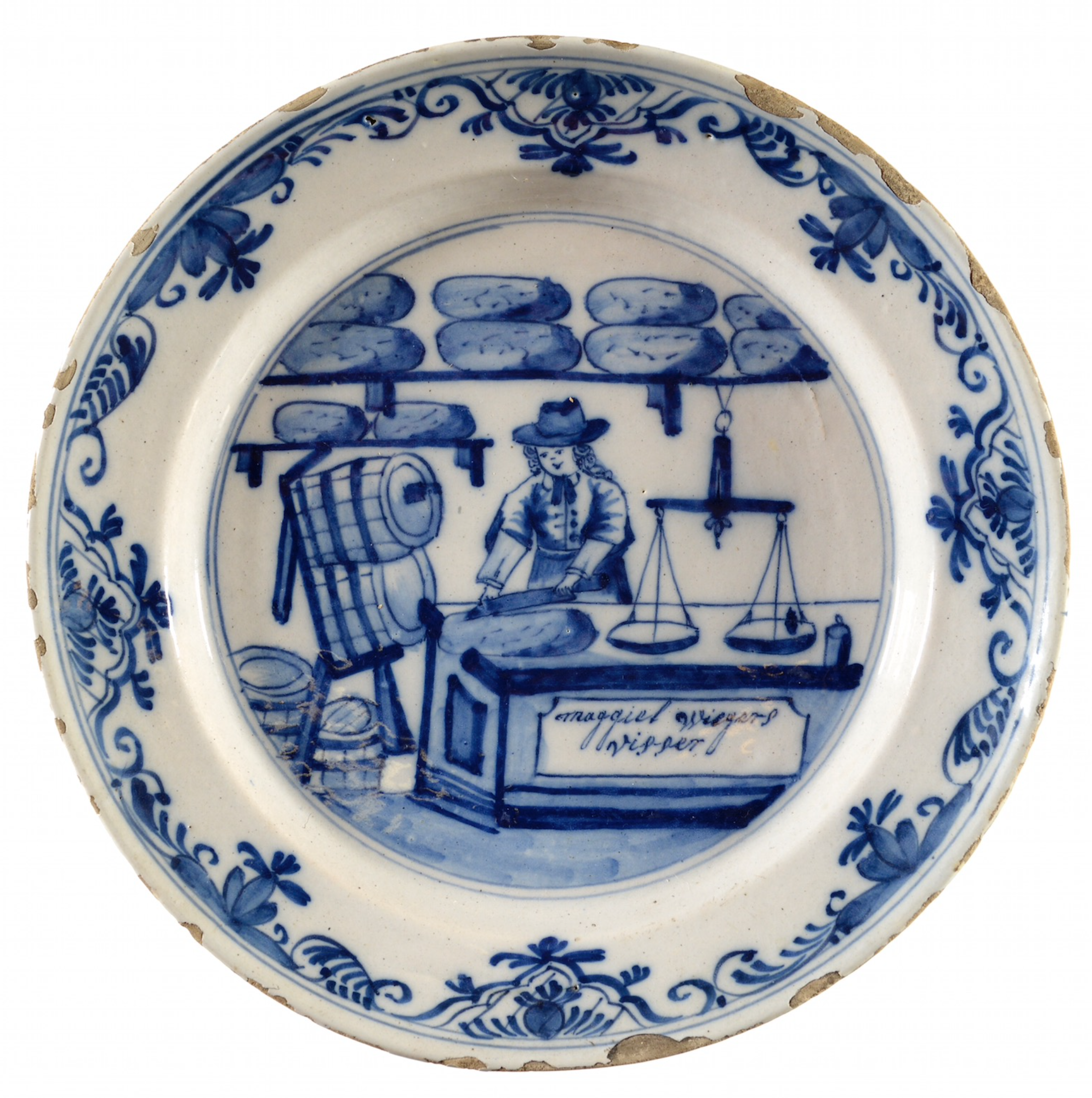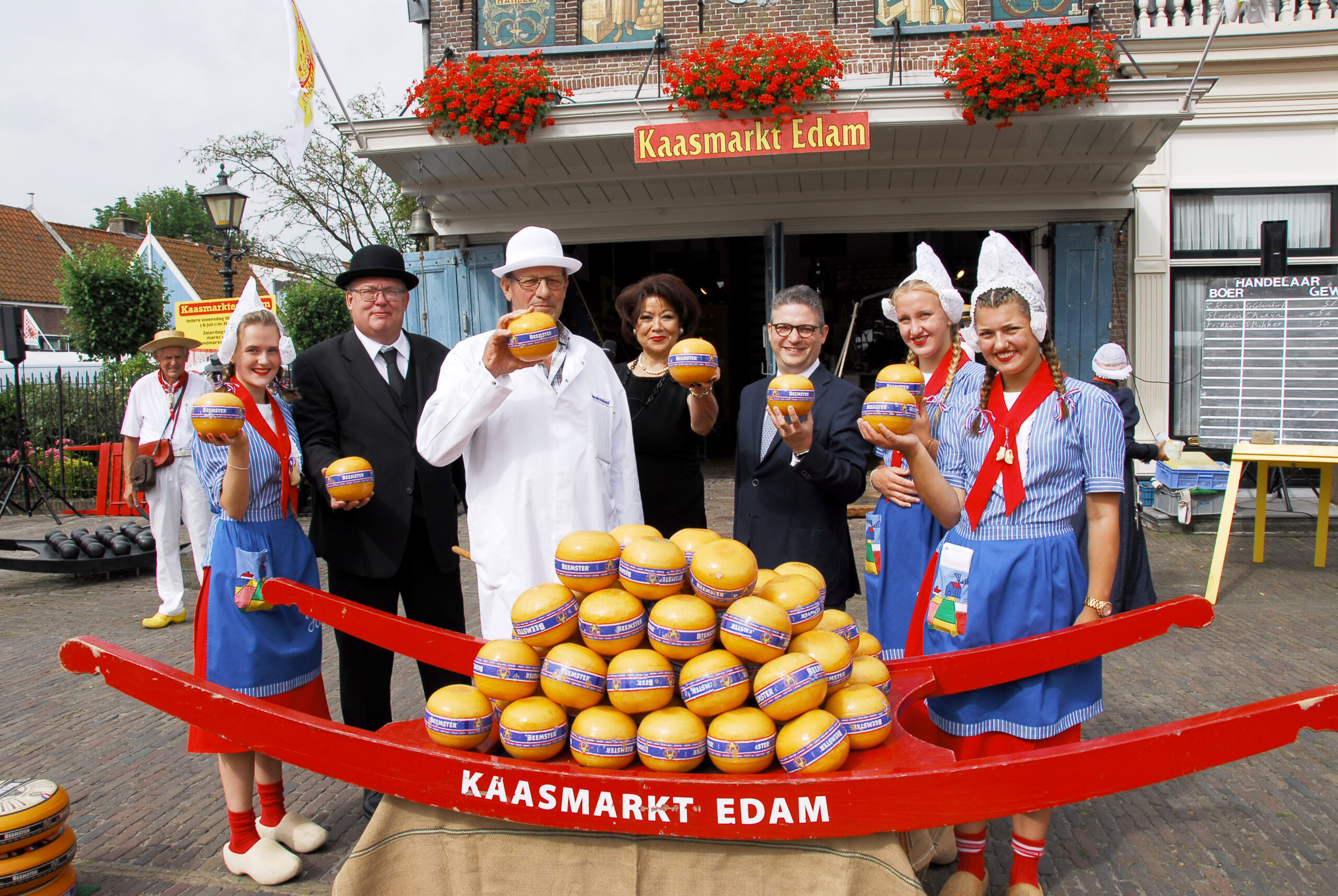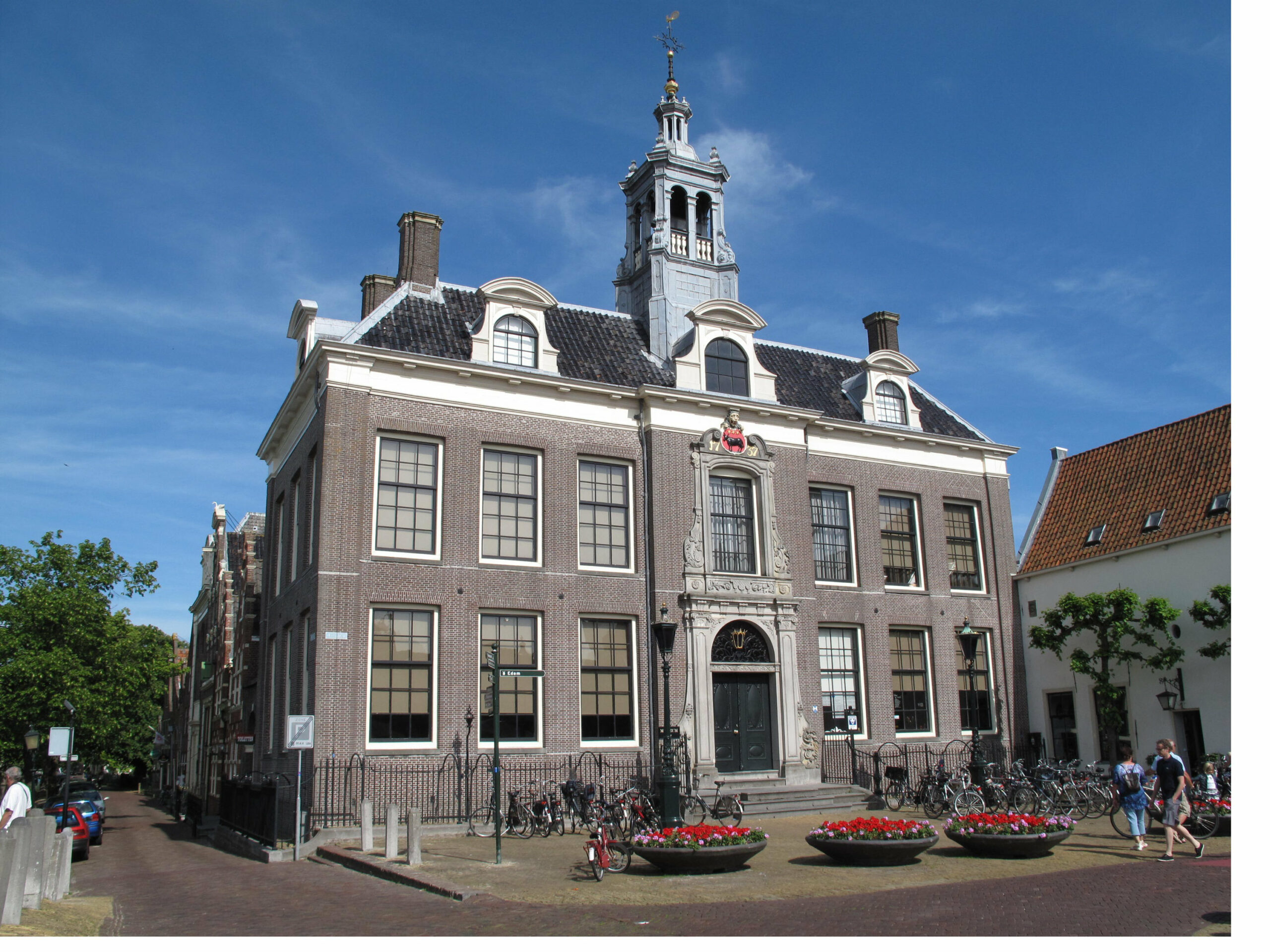
Edam is a small city North of Amsterdam, famous for the small round cheeses bearing the name of the city. The town was founded around a dam crossing the river E or IJe near the Zuiderzee (currently known as the IJsselmeer). Around 1230 the channel was dammed, and goods had to be transferred from vessel to vessel. The inhabitants of Edam levied a toll, which enabled Edam to grow economically. Edam acquired city rights in 1357 by Count Willem V. A new harbor was established, which connected it to other major Dutch cities as well as international trade.
Fishing, timber trade and shipbuilding became interesting and flourishing businesses for the coastal city of Edam. By the sixteenth century there were as many as 33 wharves in Edam, a very high number compared to the relative small size of the city. The local economy was further boosted by a market held three times a year. In fact, Edam was one of the more important towns of North Holland, vying with chambers of the VOC (Verenigde Oost Indische Compagnie) in Enkhuizen, Hoorn and Amsterdam. However, the shipbuilding industry declined at the end of the seventeenth century when Emperor Charles V built lock gates to protect the city from flooding. The gates caused the harbor to be bogged down, and it was eventually closed. The shipbuilding and timber trade then moved to Amsterdam and the Zaan region in the second half of the seventeenth century. With the reclaimed land in Edam, the city transformed itself into a thriving regional center for the cattle trade and its famous cheese. After the middle of the eighteenth century, the economy of Edam stagnated. This was reinforced by the construction of the Noord-Hollands Kanaal (1824), which meant that ships no longer passed through the city.

There are many treasures from the golden age of Edam, many of which are preserved and displayed in the Edam museum. The museum is one of the oldest institutions in North Holland, and it is housed in a beautiful late Gothic-style merchant’s house. The structure, built between 1540-1550, is the oldest brick-built house in Edam. In 1893, the Edam city council purchased the building and it subsequently underwent an extensive restoration overseen by Pierre Cuypers (original architect of the Rijksmuseum) and Victor de Stuers. The museum opened in 1895 and it continues to operate today. A second location is housed on the first floor of Edam’s old town hall, dating from 1737. The building was renovated in the seventeenth century and furnished with a luxurious new interior, which has largely been unchanged since. This space, including the historic Mayor’s Chamber, is the setting for regular short term exhibitions.
The floating cellar is a famous feature of Edam Museum. The cellar is a loose container that floats on the groundwater. Due to tidal movements of the sea, (the museum is located on Dam Square, the location of what used to be a (sea) lock) the Zuiderzee influences the groundwater level. Because the basement moves with the water, it never floods. Floating cellars are not unique; many are found in Edam and especially in Amsterdam. However, the floating cellar in Edam Museum is the only one in the Netherlands that is publicly accessible.
A significant part of the museum collection was acquired by Herman Beek, the so called ‘Artbaker’, as he was a baker and antique dealer in Edam. According to legend, he amassed his collection, among other things, by having his customers pay with antiques for the bread he sold. A great deal of his collection was either sold or donated to the Edam Museum by the Van Beek family.
The collection contains a wide range of objects related to the history of Edam and beyond, including a group of Delftware objects. One interesting piece is a Delft dish made in the second half of the eighteenth century, which the museum acquired from Aronson Antiquairs. The imagery on the dish is very much related to the significance of Edam as a ‘Cheese city.’ The dish is painted in the center with a cheesemonger wearing a large hat, standing behind his counter and slicing a large wheel of cheese with a large knife. Above his head are eight cheeses on a shelf suspending a scale, and a smaller shelf of two cheeses above four wooden barrels to his right. The front of the counter is inscribed “Maggiel Wiegers Visser”, and the rim with a border of floral lappets alternating with large demi-blossoms and foliate scrolls, the footrim of each pierced with a hole for suspension. The plate bears no mark, which was very common for special orders like the present dish.
According to archival material, Maggiel Wiegers Visser was born in 1768 in Woudsend, Friesland. Unlike his male family members, he wasn’t involved in eel trade, or eel trade related business, but he started a dairy trade, selling butter, milk and cheese in his shop in Woudsend. After his marriage in 1790, he continued his business in Grouw. The plate was probably ordered in Delft as a promotional or commemorative gift, by Maggiel himself or someone else.
There are four similar plates known: one in ‘Het Scheepvaart Museum’ in Sneek, one in ‘Het Openlucht Museum’, Arnhem, Wadsworth Atheneum Museum of Art in Hartford and one in a private collection in The Netherlands.




